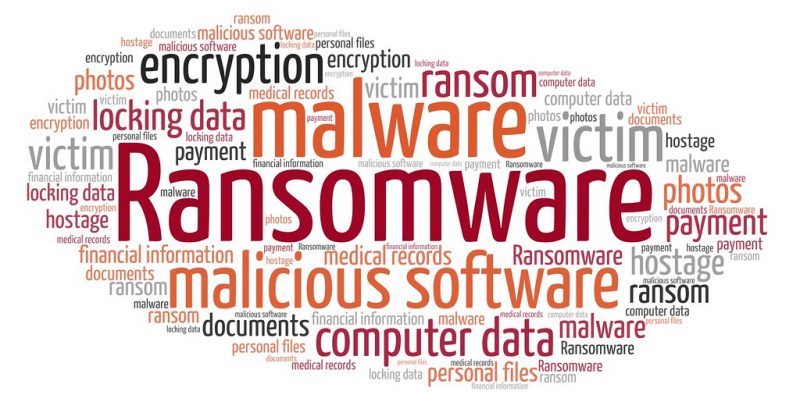Can AGI take the next step toward genuine intelligence?

To take the next step on the road to genuine intelligence, AGI needs to create
its underpinnings by emulating the capabilities of a three-year-old. Take a look
at how a three-year-old playing with blocks learns. Using multiple senses and
interaction with objects over time, the child learns that blocks are solid and
can’t move through each other, that if the blocks are stacked too high they will
fall over, that round blocks roll and square blocks don’t, and so on. A
three-year-old, of course, has an advantage over AI in that he or she learns
everything in the context of everything else. Today’s AI has no context. Images
of blocks are just different arrangements of pixels. Neither image-based AI
(think facial recognition) nor word-based AI (like Alexa) has the context of a
“thing” like the child’s block which exists in reality, is more-or-less
permanent, and is susceptible to basic laws of physics. This kind of low-level
logic and common sense in the human brain is not completely understood but human
intelligence develops within the context of human goals, emotions, and
instincts. Humanlike goals and instincts would not form the best basis for
AGI.
How to take advantage of Android 12’s new privacy options
:format(webp)/cdn.vox-cdn.com/uploads/chorus_image/image/69754581/VRG_1777_Android_12_002.0.jpg)
First and foremost in the Android 12 privacy lineup is Google’s shiny new
Privacy Dashboard. It’s essentially a streamlined command center that lets you
see how different apps are accessing data on your device so you can clamp down
on that access as needed. ... Next on the Android 12 privacy list is a feature
you’ll occasionally see on your screen but whose message might not always be
obvious. Whenever an app is accessing your phone’s camera or microphone — even
if only in the background — Android 12 will place an indicator in the
upper-right corner of your screen to alert you. When the indicator first
appears, it shows an icon that corresponds with the exact manner of access. But
that icon remains visible only for a second or so, after which point the
indicator changes to a tiny green dot. So how can you know what’s being accessed
and which app is responsible? The secret is in the swipe down: Anytime you see a
green dot in the corner of your screen, swipe down once from the top of the
display. The dot will expand back to that full icon, and you can then tap it to
see exactly what’s involved.
Achieving Harmonious Orchestration with Microservices

The interdependency of your microservices-based architecture also complicates
logging and makes log aggregation a vital part of a successful approach. Sarah
Wells, the technical director at the Financial Times, has overseen her team’s
migration of more than 150 microservices to Kubernetes. Ahead of this project,
while creating an effective log aggregation system, Wells cited the need for
selectively choosing metrics and named attributes that identify the event, along
with all the surrounding occurrences happening as part of it. Correlating
related services ensures that a system is designed to flag genuinely meaningful
issues as they happen. In her recent talk at QCon, she also notes the importance
of understanding rate limits when constructing your log aggregation. As she
pointed out, when it comes to logs, you often don’t know if you’ve lost a record
of something important until it’s too late. A great approach is to implement a
process that turns any situation into a request. For instance, the next time
your team finds itself looking for a piece of information it deems useful, don’t
just fulfill the request, log it with your next team’s process review to see
whether you can expand your reporting metrics.
How Ready Are You for a Ransomware Attack?

Setting the bar high enough to protect against initial entry is a laudable goal,
but also adheres to the law of diminishing returns. This means the focus must
shift towards improving how difficult it is for an attacker to move around your
environment once they have gotten inside. This phase of the attack often
requires some manual control, so identifying and disrupting command and control
(C2) channels can pay significant dividends – but realize that only the least
sophisticated attacker will reuse the same domains and IPs of a previous attack.
So rather than looking for C2 communications via threat intel feeds, your
approach needs to be to look for patterns of behavior which look like
remote-access trojans (RATs) or hidden tunnels (suspicious forms of beaconing).
Barriers to privilege escalation and lateral movement come down to cyber-hygiene
related to patching (are there easily accessible exploits for local privilege
escalation?), rights management (are accounts granted overly generous
privileges?) and network segmentation (is it easy to traverse the network?).
Most of the current raft of ransomware attacks have utilized the serial
compromise of credentials to move from the initial point-of-entry to more useful
parts of the network.
The rise and fall of merit

Wooldridge identifies Plato’s Republic as the origin of the concept of
meritocracy, in which the Athenian philosopher imagined a society run by an
intellectual elite, “who have the ability to think more deeply, see more clearly
and rule more justly than anyone else.” Crucially, Plato’s ruling class was
remade each generation—aristocrats were not assumed to pass on their talents—and
it prized women as highly as men. Wooldridge finds meritocratic leanings in
other pre-modern societies, including China, which began in the fifth century to
use exams to recruit civil servants. But it was the expansion of the state in
Europe in the early modern period that saw meritocracy first take root, albeit
in a paradoxical way. As states expanded, demand for capable bureaucrats outgrew
the ability of the aristocracy to produce them. The solution was to look
downward and offer patronage to talented lowborns. Men such as French dramatist
Jean Racine; London diarist Samuel Pepys; economist Adam Smith; and Henry VIII’s
right-hand man, Thomas Cromwell, were all plucked from obscurity by
favoritism.
Intel Advances Architecture for Data Center, HPC-AI and Client Computing

This x86 core is not only the highest performing CPU core Intel has ever built,
but it also delivers a step function in CPU architecture performance that will
drive the next decade of compute. It was designed as a wider, deeper and smarter
architecture to expose more parallelism, increase execution parallelism, reduce
latency and increase general purpose performance. It also helps support large
data and large code footprint applications. Performance-core provides a Geomean
improvement of about 19%, across a wide range of workloads over our current 11th
Gen Intel® Core™ architecture (Cypress Cove core) at the same frequency.
Targeted for data center processors and for the evolving trends in machine
learning, Performance-core brings dedicated hardware, including Intel's new
Advanced Matrix Extensions (AMX), to perform matrix multiplication operations
for an order of magnitude performance – a nearly 8x increase in artificial
intelligence acceleration.1 This is architected for software ease of use,
leveraging the x86 programing model.
A Soft, Wearable Brain–Machine Interface

Being both flexible and soft, the EEG scalp can be worn over hair and requires
no gels or pastes to keep in place. The improved signal recording is largely
down to the micro-needle electrodes, invisible to the naked eye, which penetrate
the outermost layer of the skin. "You won't feel anything because [they are] too
small to be detected by nerves," says Woon-Hong Yeo of the Georgia Institute of
Technology. In conventional EEG set-ups, he adds, any motion like blinking or
teeth grinding by the wearer causes signal degradation. "But once you make it
ultra-light, thin, like our device, then you can minimize all of those motion
issues." The team used machine learning to analyze and classify the neural
signals received by the system and identify when the wearer was imagining motor
activity. That, says Yeo, is the essential component of a BMI, to distinguish
between different types of inputs. "Typically, people use machine learning or
deep learning… We used convolutional neural networks." This type of deep
learning is typically used in computer vision tasks such as pattern recognition
or facial recognition, and "not exclusively for brain signals," Yeo
adds.
How to proactively defend against Mozi IoT botnet
While the botnet itself is not new, Microsoft’s IoT security researchers recently discovered that Mozi has evolved to achieve persistence on network gateways manufactured by Netgear, Huawei, and ZTE. It does this using clever persistence techniques that are specifically adapted to each gateway’s particular architecture. Network gateways are a particularly juicy target for adversaries because they are ideal as initial access points to corporate networks. Adversaries can search the internet for vulnerable devices via scanning tools like Shodan, infect them, perform reconnaissance, and then move laterally to compromise higher value targets—including information systems and critical industrial control system (ICS) devices in the operational technology (OT) networks. By infecting routers, they can perform man-in-the-middle (MITM) attacks—via HTTP hijacking and DNS spoofing—to compromise endpoints and deploy ransomware or cause safety incidents in OT facilities. In the diagram below we show just one example of how the vulnerabilities and newly discovered persistence techniques could be used together.
CBAP certification: A high-profile credential for business analysts

CBAP is the most advanced of IIBA’s core sequence of credentials for business
analysts. It follows the Entry Certificate in Business Analysis (ECBA) and the
Certification for Competency in Business Analysis (CCBA). As you might expect,
the requirements get more extensive as you climb the ladder: CBAP requires more
training, work experience, and knowledge area expertise. AdaptiveUS, a company
that offers training for all of IIBA’s certs, breaks down the various
requirements, but the important thing to know is that CBAP holders are at the
top of the heap; while you don’t need to have the lower-level certs to get your
CBAP certification, you should be fairly well established in your career as a BA
before you consider it. Like IIBA’s other certs, the CBAP draws from A Guide to
the Business Analysis Body of Knowledge, also known as the BABOK Guide. The
BABOK Guide is a publication from IIBA that aims to serve as a bible for the
business analysis industry, collecting best practices from real-world
practitioners. It was first published in 2005 and is continuously
updated.
A Short Introduction to Apache Iceberg
Partitioning reduces the query response time in Apache Hive as data is stored in horizontal slices. In Hive partitioning, partitions are explicit and appear as a column and must be given partition values. Due to this approach, Hive having several issues like not being able to validate partition values is so fully dependent on the writer to produce the correct value, 100% dependent on the user to write queries correctly, Working queries are tightly coupled with the table’s partitioning scheme, so partitioning configuration cannot be changed without breaking queries, etc. Apache Iceberg introduces the concept of hidden partitioning where the reading of unnecessary partitions can be avoided automatically. Data consumers that fire the queries don’t need to know how the table is partitioned and add extra filters to their queries. Iceberg partition layouts can evolve as needed. Iceberg can hide partitioning because it does not require user-maintained partition columns. Iceberg produces partition values by taking a column value and optionally transforming it.
Quote for the day:
"Be willing to make decisions. That's
the most important quality in a good leader." --
General George S. Patton, Jr.
No comments:
Post a Comment